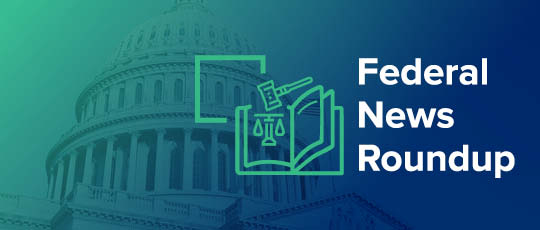For WorldatWork Members
- Helping Employees Secure Their Retirement Future, Journal of Total Rewards article
- Revisiting Retirement Benefits, Workspan Magazine article
- FAQs to Help You Navigate Employee Retirement Discussions, Workspan Daily Plus+ article
- How TR Pros Can Help Workers Financially Prepare for Retirement, Workspan Daily Plus+ article
For Everyone
- Chevron Doctrine Overturned: What It Means for Employers, Workspan Daily article
- Fiduciary Final Rule Is Published. What’s the Impact for HR? Workspan Daily article
- Retirement Plans: Design Considerations & Administration, course
The ability of U.S. organizations’ retirement fiduciaries to consider sustainable investment options for employee 401(k) plans has been … sustained.
On Feb. 14, a federal judge in Amarillo, Texas, upheld a 2022 environmental, social and governance (ESG) rule from the U.S. Department of Labor (DOL) that allows retirement plan fiduciaries to consider issues such as climate change and social justice as factors when choosing investments — if all other considerations involving competing investments are equal. (In effect, ESG-related investments have merit and may be an acceptable tiebreaker choice for fiduciaries.)
In doing so, Judge Matthew Kacsmaryk of the U.S. District Court for the Eastern District of Texas rejected the arguments of attorneys general in 26 Republican-led states, who asked the court to reconsider an earlier decision supporting the rule on the grounds that it is inconsistent with the U.S. Supreme Court’s June 28, 2024, ruling in Loper Bright Enterprises v. Raimondo (and the affiliated case Relentless v. Department of Commerce). The Loper Bright decision served to overturn the Chevron doctrine, a decades-old standard that required courts to give substantial deference to federal agencies and rulemaking bodies.
The Basis of the Lawsuit
The attorneys general who filed the lawsuit in January 2023 represent the states of Alabama, Alaska, Arkansas, Florida, Georgia, Idaho, Indiana, Iowa, Kansas, Kentucky, Louisiana, Mississippi, Missouri, Montana, Nebraska, New Hampshire, North Dakota, Ohio, Oklahoma, South Carolina, Tennessee, Texas, Utah, Virginia, West Virginia and Wyoming.
These plaintiffs alleged that the 2022 DOL “Prudence and Loyalty in Selecting Plan Investments and Exercising Shareholder Rights” rule, which took effect Jan. 30, 2023, “undermines key protections for retirement savings of 152 million workers — approximately two-thirds of the U.S. adult population and totaling $12 trillion in assets — in the name of promoting environmental, social and governance (ESG) factors in investing, including the Biden administration’s stated desire to address climate change.”
The lawsuit called the 2022 rule “arbitrary and capricious,” which are prominent terms from the Chevron and Loper Bright cases (as well as other notable cases) that serve to define whether rulemaking is lawful and rulemaking authority is appropriate. In doing so, the plaintiffs claimed, “the 2022 rule oversteps the [DOL’s] statutory authority under the Employment Retirement Income Security Act of 1974 (ERISA) and is contrary to law.”
(ERISA is a federal law that sets minimum standards for most voluntarily established retirement and health plans in private industry, with the goal of providing protection for plan participants.)
In summary, the plaintiffs sought to have Judge Kacsmaryk use the judiciary power enabled by the Loper Bright ruling to “reject interpretations of statutes adopted by federal administrative agencies” — in this case, the DOL.
The Judge’s Take on the Matter
Judge Kacsmaryk disagreed with the 26 attorneys general and wrote in his decision, “Plaintiffs would have this court vacate the 2022 rule to ‘restore the protections of the 2020 rules.’ … However, the 2020 rule has a tiebreaker provision that would also violate [the] plaintiffs’ interpretation of ERISA. But ERISA’s text does not invalidate the tiebreaker provision of the 2020 rule of the 2022 rule.”
The judge also opined that legal standards and precedent — and investors’ bottom-line best interests — should guide fiduciaries’ investment strategies and decisions. With such criteria and priorities, fiduciaries “should strenuously guard against letting impermissible considerations taint their decisions. And, wisdom would counsel the protections of the 2020 rule to aid this prevention.”
He added, “The 2022 rule does not permit a fiduciary to act for other interests than the beneficiaries’ or for other purposes than the beneficiaries’ financial benefit. For that reason, under the Loper Bright standard, it is not contrary to [the] law.”
In the lawsuit’s initial ruling, in September 2023, Judge Kacsmaryk called out the potential of plans with ESG considerations to act in investors’ financial interests, stating, “Indeed since at least 2015, [the] DOL has posited that ESG factors ‘may have a direct relationship to the economic value of the plan’s investment.’ And likewise, the 2020 rule stated that failing to consider ESG-related risk-return factors could constitute a violation of the duty of prudence in some circumstances.”
Opinions and Outcomes
Brian Grauff, the CEO of the American Retirement Association (ARA), used the words “thoughtful” and “consistent” to describe the district court decision.
“The ARA supported this rule,” he said. “We hope the rule’s detractors will now finally recognize that the rule is consistent with ERISA’s longstanding principle that plan fiduciaries must always act in the financial interests of plan fiduciaries and so-called ‘ESG’ investments can only be considered consistent with that principle. Perhaps now, EBSA [the Employee Benefit Security Administration] can finally be done with this matter and move on to more important matters.”
(EBSA is the DOL agency responsible for administering, regulating and enforcing ERISA Title I provisions.)
According to Harvard University’s Law School, in a post on its Forum on Corporate Governance website, takeaways from the case include:
- The overturning of the Chevron doctrine doesn’t change the district court’s conclusions that the “major questions doctrine” doesn’t apply. Under the major questions doctrine, courts must not interpret statutes as delegating major questions to agencies unless Congress clearly said so.
- So-called Skidmore deference does still apply. This allows a federal court to yield to a federal agency’s interpretation of a statute administered by the agency according to that agency’s ability to demonstrate “persuasive reasoning”.
- The tiebreaker provision already has built-in guardrails under ERISA’s duties of loyalty and prudence.
- In the event of a tie, it may not always be prudent to choose both investments (e.g., if there are additional transaction or monitoring costs involved).
Editor’s Note: Additional Content
For more information and resources related to this article, see the pages below, which offer quick access to all WorldatWork content on these topics:







